Marketing Communications (MarCom)
Feb 16, 2024
By Ari Manor , CEO at ZOOZ

This is one in a series of articles that provide detailed and updated information about Marketing. In this specific article, which focuses on Marketing Communications (MarCom), you can read about:
- Marketing Communications (Marcom)
- Marketing Brief
- Marketing Materials
- Marketing Writing
- Marketing Newsletter
- What is the #1 Rule in Marketing?
- Advertising
- Marketing and Advertising
For additional articles about Marketing, see the Topic Menu.

Marketing Communications (MarCom)
Marketing communications (MarCom) refers to the various methods and channels a business uses to communicate with its target audience, promote its brand, products, or services, and achieve its marketing objectives. MarCom is essential for building brand awareness, generating interest, and driving customer engagement and loyalty. In a broader perspective, any form of contact between customers (and potential customers) and a business should be considered, including the sign on the business door, the message on the business answering machine, the information in the Yellow Pages, the product packaging, the stationery, the invoices, etc.
Here's an overview of key components and strategies in effective MarCom:
- Advertising: Utilizes paid channels to promote products or services to a wide audience. This includes traditional media like TV, radio, and print, as well as digital platforms such as social media, search engines, and websites.
- Public Relations (PR): Focuses on managing the public perception of a brand through media coverage, press releases, and public events. PR aims to create positive publicity and manage reputation. Often, PR can pave the way for effective advertising: when the business is exposed via PR, it makes sense to strengthen the exposure with ads.
- Sales Promotions: Involves short-term incentives to encourage the purchase or sale of a product or service. Examples include discounts, coupons, contests, giveaways, and loyalty programs.
- Direct Marketing: Directly communicates with targeted individual consumers to generate a response or transaction. This can be done through email marketing, direct mail, telemarketing, and SMS messaging.
- Personal Selling: Involves one-on-one interactions between sales representatives and potential buyers to persuade them to make a purchase. This is common in B2B marketing and high-value B2C sales. Due to the costs involved, and since personal selling is not easily scalable, other alternatives should be considered if personal selling is not cost-effective, or when fast and significant scalability is needed.
- Digital Marketing: Encompasses all online marketing efforts, including SEO (Search Engine Optimization), content marketing, social media marketing, email marketing, and online advertising. Digital marketing is crucial for reaching today's internet-savvy consumers.
- Content Marketing: Focuses on creating and distributing valuable, relevant, and consistent content to attract and retain a clearly defined audience. Content marketing establishes expertise, promotes brand awareness, and keeps your business top of mind.
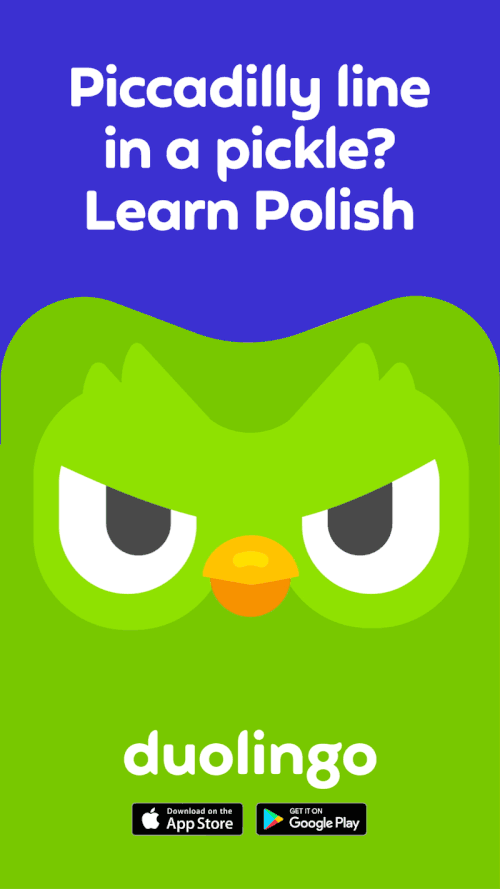 Case Study: Duolingo’s Linguistic Levity
Case Study: Duolingo’s Linguistic Levity- Company: Duolingo, Global (Founded in 2011)
- What Was Done: Language-learning platform Duolingo used marketing communications that embraced a playful and humorous tone, which is particularly evident on their social media channels. They have utilized their mascot, Duo the Owl, to engage users in both educational content and light-hearted, often meme-driven, interactions.
- Results/Impact: Duolingo’s approach to MarCom has helped them to amass a user base of over 300 million by maintaining high engagement levels and brand recall. Their unique voice has made language learning approachable and fun, differentiating them from competitors.
- Social Media Marketing: Uses social media platforms to connect with the audience, build the brand, increase sales, and drive website traffic. It's a key tool for engagement, customer service, and community building.
 Case Study: Ban.do's Emotional Connection Campaign
Case Study: Ban.do's Emotional Connection Campaign- Company: Ban.do, United States (Founded in 2008)
- What Was Done: Ban.do, a lifestyle brand, crafted a MarCom strategy that emphasized emotional connections with its audience through uplifting messaging and community-building initiatives. They used social media, email marketing, and collaborations to share stories that resonated with their audience's desire for positivity and mental wellness.
- Results/Impact: This approach helped Ban.do cultivate a loyal customer base and expand its product line from simple accessories to apparel, wellness products, and more. The brand's commitment to fostering a supportive community contributed to its growth and popularity.
- Brand Management: Involves developing and maintaining a brand's image, identity, and position in the market. This includes managing visual elements (logo, colors), brand messaging, and the overall customer experience.
 Case Study: A24’s Indie Film Fervor
Case Study: A24’s Indie Film Fervor- Company: A24, United States (Founded in 2012)
- What Was Done: Independent entertainment company A24 developed a marketing communications strategy that relied on creating a strong, cohesive brand voice across unconventional platforms, including viral social media interactions and distinctive merchandise.
- Results/Impact: A24’s approach has not only driven the success of indie film hits like "Moonlight" and "Lady Bird" but also cultivated a dedicated fan base, setting A24 apart from larger studios and contributing to a new model for indie film success.
- Integrated Marketing Communications (IMC): Ensures consistency of message across all marketing channels and touchpoints. IMC creates a unified and seamless brand experience for consumers, maximizing the impact of MarCom efforts.
Effective marketing communications require a strategic approach, aligning MarCom activities with the overall marketing strategy and business goals. By integrating various MarCom components and ensuring consistent messaging, businesses can effectively communicate their value proposition, engage their target audience, and drive meaningful results.

Marketing Brief
A marketing brief is a comprehensive document that outlines the marketing strategy, objectives, and specific actions needed for a marketing campaign or project. It serves as a roadmap for the marketing team, external agencies, and stakeholders, ensuring that everyone involved has a clear understanding of the goals, target audience, key messages, budget, and timelines.
Here’s how to create an effective marketing brief:
- Background and Objectives: Begin by providing context about your business, the market situation, and any relevant history. Clearly state the objectives of the marketing campaign or project, specifying what you aim to achieve.
- Target Audience: Define your target audience in detail, including demographic, psychographic, and behavioral characteristics. Understanding who you are targeting is crucial for tailoring your marketing messages and tactics.
- Market Research: Summarize any market research that informs the marketing strategy. This could include insights into customer behavior, competitive analysis, and industry trends.
- Key Messages: Outline the key messages you want to communicate to your target audience. These should align with your brand’s value proposition and the specific objectives of the campaign.
 Case Study: Bellroy’s Wallet for Simplicity
Case Study: Bellroy’s Wallet for Simplicity- Company: Bellroy, Australia (Founded in 2010)
- What Was Done: Bellroy, a company specializing in wallets and carry goods, utilized a marketing brief that clearly articulated their value proposition: slim wallets designed through insights in carryology. This clarity guided all marketing efforts, from web design to product packaging.
- Results/Impact: With a sharp focus on their unique selling points, Bellroy successfully expanded its product range and global presence, becoming a leader in the minimalist wallet market and gaining a reputation for innovation in product design and marketing clarity.
- Marketing Strategies and Channels: Describe the marketing strategies and channels you plan to use, such as digital marketing, social media, email marketing, content marketing, advertising, PR, and events. Explain why these channels are chosen based on your target audience and objectives.
 Case Study: Spotify Wrapped’s Personalized Recap
Case Study: Spotify Wrapped’s Personalized Recap- Company: Spotify, Global (Founded in 2006)
- What Was Done: Spotify's marketing brief for the annual ‘Wrapped’ feature centered on personalized storytelling, recapping users’ year in music. The brief outlined objectives for user engagement and sharing, leveraging data visualization and social media integration.
- Results/Impact: Spotify Wrapped has become a cultural phenomenon, significantly increasing user engagement and social media mentions during its release. It effectively turns millions of users into brand ambassadors annually as they share their musical year with friends.
- Creative Requirements: Provide guidance on the creative aspects of the campaign, including tone of voice, visual style, and any branding guidelines that need to be followed. Include specific requirements for logos, color schemes, fonts, and imagery.
 Case Study: Chubbies Shorts’ Weekend Vibes Launch
Case Study: Chubbies Shorts’ Weekend Vibes Launch- Company: Chubbies Shorts, United States (Founded in 2011)
- What Was Done: Chubbies, known for its casual shorts, developed a marketing brief focused on capturing the essence of weekend leisure. The brief guided all marketing materials and campaigns, emphasizing fun, relaxation, and the brand's vibrant personality.
- Results/Impact: The clarity and focus of the marketing brief ensured consistent messaging across platforms, contributing to Chubbies' identity as a weekend and leisure wear brand. This clarity helped Chubbies establish a strong, distinct brand presence in a crowded apparel market.
- Budget: Detail the budget allocated for the campaign, including a breakdown of costs across different marketing activities and channels. This ensures that the plan is realistic and financially viable.
- Timelines and Milestones: Set out a timeline for the campaign, highlighting key milestones, deadlines, and deliverables. This helps in tracking progress and ensures that the project stays on schedule.
- Measurement and KPIs: Define how the success of the campaign will be measured, including the key performance indicators (KPIs) you will track. This could include metrics such as website traffic, lead generation, conversion rates, and sales figures.
- Roles and Responsibilities: Clearly assign roles and responsibilities to team members, agencies, or partners involved in the campaign. This ensures accountability and efficient execution.
An effective marketing brief is clear, concise, and comprehensive, providing all the necessary information to guide the development and implementation of marketing activities. It aligns the team’s efforts with the overall marketing strategy and business goals, ensuring that everyone is working towards the same objectives with a shared understanding of the campaign’s direction.

Marketing Materials
Marketing materials are the tangible and digital assets used to promote a company, its brand, products, or services to customers and prospects. These materials play a crucial role in building brand awareness, conveying key messages, and supporting sales and marketing efforts.
Here's an overview of common types of marketing materials and their purposes:
- Stationery: Includes branded physical and digital elements such as letterheads, envelopes, business cards, and email signatures. Featuring the company logo, slogan, and contact information, stationery enhances professional communication and reinforces brand identity in every correspondence.
- Business Cards: Small, but powerful tools for making a lasting impression during networking. They contain contact information and the brand logo, facilitating future connections.
- Nowadays, business cards can be shared digitally, for example by adding a QR code or NFC chip to the card (see V1CE contactless business cards).
- Nowadays, business cards can be shared digitally, for example by adding a QR code or NFC chip to the card (see V1CE contactless business cards).
- Brochures and Flyers: Compact, visually appealing documents that provide essential information about products, services, or the company itself (e.g. – company profile). They're useful for quick distribution and easy reference.
- Websites: Serve as a digital storefront and information hub, offering comprehensive details about a company’s offerings, values, and contact information. Websites are crucial for establishing online presence and credibility.
 Case Study: Asana’s Productivity Narrative
Case Study: Asana’s Productivity Narrative- Company: Asana, United States (Founded in 2008)
- What Was Done: Asana, a project management software company, implemented a MarCom strategy that focused on the narrative of enhancing workplace productivity and collaboration. Through educational content, webinars, and case studies, they communicated the benefits of their platform, addressing both the user's pain points and aspirations.
- Results/Impact: Asana successfully positioned itself as an essential tool for efficient team collaboration and project management, leading to a significant increase in user adoption and brand loyalty. Their approach in MarCom played a crucial role in their IPO in 2020.
- Social Media Profiles: Platforms like LinkedIn, Facebook, Instagram, and Twitter allow businesses to engage with audiences, share content, and promote products or services in a more interactive and personal way.
- Email Newsletters: Regularly sent to subscribers, newsletters keep audiences informed about the latest news, offers, and insights, helping to nurture leads and maintain engagement.
- Product Catalogs: Detailed listings of products or services offered, including descriptions, prices, and images. Catalogs can be physical or digital and help customers make informed purchasing decisions.
 Case Study: Patagonia’s Environmental Advocacy in Catalogs
Case Study: Patagonia’s Environmental Advocacy in Catalogs- Company: Patagonia, Global (Founded in 1973)
- What Was Done: Patagonia utilized its product catalogs not just to showcase its clothing but also to advocate for environmental causes. The catalogs featured stunning nature photography, essays on conservation, and information on environmental campaigns, blending marketing with activism.
- Results/Impact: This approach reinforced Patagonia’s brand identity as an advocate for environmental issues, deepening customer loyalty and differentiating the company from competitors. It contributed to Patagonia’s reputation as a leader in corporate responsibility and sustainability.
- Presentation Decks: Used in meetings, pitches, or webinars to visually convey information, tell a story, or persuade an audience. They support verbal communication with engaging visuals and key points.
- For investors, a Presentation Deck is essential, as are the One Pager and the Spreadsheet Business Plan.
- For investors, a Presentation Deck is essential, as are the One Pager and the Spreadsheet Business Plan.
- Videos: Increasingly popular for their ability to engage audiences deeply, videos can explain concepts, showcase products, share testimonials, or tell a brand’s story.
- Short video clips offer a highly influential communication channel via apps like TikTok, Instagram Reels, and Facebook Stories, especially for younger generations.
- Short video clips offer a highly influential communication channel via apps like TikTok, Instagram Reels, and Facebook Stories, especially for younger generations.
- Infographics: Visual representations of information, data, or knowledge intended to present content quickly and clearly. They are effective for making complex information more accessible.
- Case Studies and White Papers: Provide in-depth analysis or report on specific topics, demonstrating expertise, thought leadership, and the value of products or services in solving real-world problems.
- Point-of-Sale (POS) Displays: Physical or digital displays located near the checkout area, designed to catch the customer's eye and encourage impulse purchases or highlight products.
- Package Design: Involves crafting the product's exterior to attract attention, convey information, and reflect the brand's identity. This includes decisions on materials, shapes, colors, and typography. Effective package design enhances product visibility, influences purchasing decisions, and can improve user experience through functional features, like ease of use or sustainability.
 Case Study: Omsom’s Flavorful Brand Packaging
Case Study: Omsom’s Flavorful Brand Packaging- Company: Omsom, United States (Founded in 2020)
- What Was Done: Omsom, a startup offering Asian meal starter kits, focused on creating vibrant, bold packaging as a core part of its marketing materials. The packaging was designed to stand out on shelves and online, reflecting the company’s mission to bring proud, loud Asian flavors to American kitchens.
- Results/Impact: The distinctive packaging contributed significantly to the brand's visibility and appeal, driving online sales and earning features in major publications. This attention helped Omsom quickly establish a foothold in the competitive food industry, showcasing the power of well-designed marketing materials.
- Swag (Promotional Products): Branded items like pens, notebooks, t-shirts, mouse pads or USB drives given away as gifts to promote brand recognition and loyalty.
- Direct Mail: Physical mail sent directly to prospects or customers, including postcards, letters, or catalogs. Despite the digital age, direct mail can still have a high impact when targeted correctly (the less common physical mail is – the more usual and therefore notable it becomes!).
- Outdoor Advertising: Includes billboards, posters, bus stop ads, and banners. These materials are designed for high visibility in public places to capture attention and build brand awareness.
- Digital signs can, in addition, adjust the display to the hour of the day, the date, the weather, the lighting around, the audience passing by (monitored with a built-in camera), and the publisher’s needs (via a remote sign management platform).
- Digital signs can, in addition, adjust the display to the hour of the day, the date, the weather, the lighting around, the audience passing by (monitored with a built-in camera), and the publisher’s needs (via a remote sign management platform).
Effective marketing materials are well-designed, align with the brand’s identity, and clearly communicate the intended message to the target audience. They should be part of a broader integrated marketing strategy to ensure consistency and reinforce the brand across all touchpoints.

Marketing Writing
Marketing writing (or copywriting) is a specialized form of communication designed to persuade or influence a target audience to take a specific action, such as making a purchase, signing up for a newsletter, or engaging with a brand. It encompasses a wide range of content types, including advertising copy, website content, blog posts, social media updates, email campaigns, and more. Effective marketing writing combines creativity with strategic messaging to engage customers, convey value, and drive conversions.
Here are key principles and strategies for successful marketing writing:
- Know Your Audience: Understanding the preferences, pain points, and behaviors of your target audience is crucial. Tailor your language, tone, and messaging to resonate with them.
- Clear and Concise: Marketing content should be straightforward and easy to understand. Avoid jargon and complex language that might confuse or alienate readers.
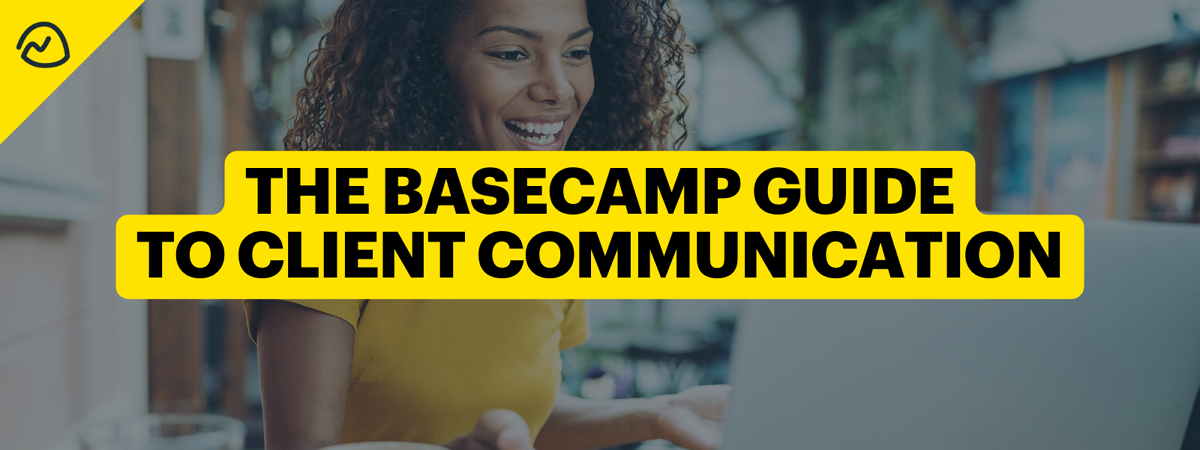 Case Study:
Case Study:
Basecamp’s Clear Communication Guide- Company: Basecamp, United States (Founded in 1999)
- What Was Done: Basecamp, a project management and team communication software company, developed a guide for clear, concise marketing writing. The guide emphasized simplicity and directness, aiming to cut through industry jargon and speak directly to the user's needs.
- Results/Impact: Basecamp’s commitment to straightforward marketing writing helped establish a brand voice that resonated with users tired of overcomplicated and buzzword-filled software marketing. This approach contributed to a loyal user base and distinguished Basecamp in a crowded market.
- Benefits Over Features: Focus on how your product or service benefits the customer, rather than just listing features. Highlight how it solves problems or improves their life.
- Strong Headlines: Create compelling headlines that grab attention and encourage readers to engage with the content. Headlines should be intriguing and reflect the core message of the content.
- Call to Action (CTA): Every piece of marketing writing should include a clear CTA, guiding readers on what to do next. Whether it’s to “Buy Now,” “Learn More,” or “Sign Up,” the CTA should be direct and actionable.
- SEO Optimization: Incorporate relevant keywords naturally to improve search engine rankings and visibility. However, ensure the content remains engaging and readable for the audience.
- Storytelling: Use storytelling to connect with readers on an emotional level. Sharing customer success stories, brand history, or relatable experiences can make your message more memorable.
- Test and Refine: Continuously test different messages, headlines, and CTAs to see what resonates best with your audience. Use analytics (e.g. – AB testing) to refine your approach based on real data.
- Consistency: Maintain a consistent brand voice and style across all marketing materials. This helps build brand recognition and trust with your audience.
- Visual Elements: While primarily focused on written content, don’t underestimate the power of integrating visual elements like images, videos, or infographics to complement and enhance your message.
- Value and Relevance: Ensure that your content provides real value to the reader. Address their needs and interests with relevant, informative, and engaging writing.
 Case Study: Mailchimp’s Content Style Guide
Case Study: Mailchimp’s Content Style Guide- Company: Mailchimp, United States (Founded in 2001)
- What Was Done: Mailchimp, United States (Founded in 2001)
- What Was Done: Mailchimp published a comprehensive content style guide focused on empathetic, inclusive marketing writing. The guide is used internally and has been made available to the public, setting standards for clear, respectful communication with diverse audiences.
- Results/Impact: The style guide helped Mailchimp maintain consistency across its marketing efforts, enhancing brand integrity and user trust. It also positioned Mailchimp as a thought leader in content strategy, influencing how other companies approach marketing writing.
Effective marketing writing is an art that requires understanding the psychology of your target audience, mastering the craft of persuasive communication, and staying up-to-date with marketing trends and best practices. By focusing on these key strategies, marketers can create compelling written content that captivates audiences, builds brand loyalty, and drives business results.

Marketing Newsletter
A marketing newsletter is a powerful tool used by businesses to communicate directly with their audience, providing valuable content, updates, promotions, and insights on a regular basis. It serves to maintain engagement, build long-term relationships with customers, and drive various marketing objectives. Crafting an effective marketing newsletter involves strategic planning and understanding of best practices.
 Case Study: A24’s Cinematic Newsletter Strategy
Case Study: A24’s Cinematic Newsletter Strategy
- Company: A24, United States (Founded in 2012)
- What Was Done: A24, an independent entertainment company, harnessed the power of email newsletters to connect with cinephiles. Their newsletters weren’t just updates but immersive experiences, filled with behind-the-scenes content, interviews, and curated movie recommendations that mirrored their unique brand of storytelling.
- Results/Impact: This approach cultivated a devoted community around A24’s brand, significantly enhancing audience engagement and loyalty. The newsletters helped maintain high interest and anticipation for A24’s film releases, contributing to the company's cult status among movie enthusiasts.
Here’s how to create a compelling marketing newsletter:
- Define Your Objectives: Clearly outline what you aim to achieve with your newsletter, such as increasing brand awareness, driving sales, sharing industry insights, or keeping your audience engaged.
 Case Study:
Case Study:
Canopy Growth’s Green Growth Newsletter.- Company: Canopy Growth, Canada (Founded in 2013)
- What Was Done: In the rapidly evolving cannabis industry, Canopy Growth launched a newsletter aimed at educating consumers about cannabis products, laws, and health implications. The newsletter content was crafted to demystify cannabis use and navigate the legal landscape, providing valuable insights and fostering trust.
- Results/Impact: The educational approach of their newsletter played a crucial role in establishing Canopy Growth as a thought leader in the cannabis industry. It also supported customer retention and acquisition by empowering consumers with knowledge in a new and often misunderstood market.
- Know Your Audience: Tailor your content to meet the interests and needs of your subscribers. Understanding your audience allows you to create relevant and valuable content that resonates.
 Case Study: REI's Outdoor Advocacy Chronicles
Case Study: REI's Outdoor Advocacy Chronicles- Company: REI, United States (Founded in 1938)
- What Was Done: REI revamped its marketing newsletter to focus on advocacy for outdoor conservation and stewardship, blending product promotions with educational content, conservation news, and how-to guides for outdoor activities. The newsletter aimed to align the company’s mission with the interests and values of its customer base.
- Results/Impact: The revamped newsletter led to increased customer engagement and loyalty, as subscribers appreciated the blend of content that matched their interests and values. REI’s approach helped solidify its brand identity as a leader in outdoor lifestyle and conservation efforts, driving both sales and participation in its sponsored outdoor programs.
- Engaging Subject Lines: The subject line is the first thing recipients see. Make it catchy, intriguing, and reflective of the newsletter’s content to encourage opens.
- Quality Content: Provide high-quality, original content that adds value to your readers. This can include industry news, tips and advice, product updates, case studies, and exclusive offers.
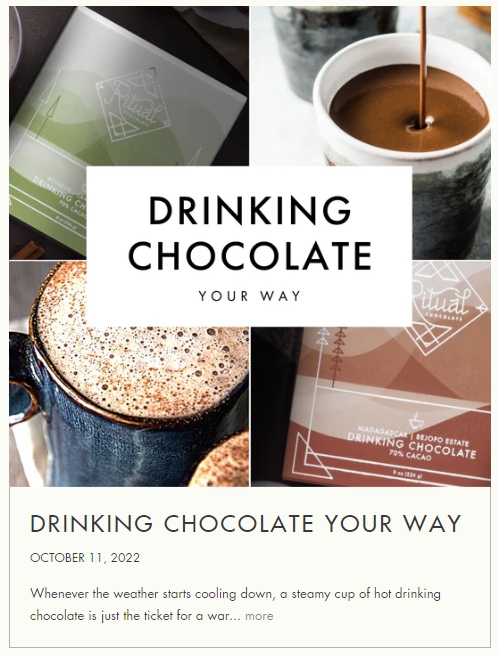 Case Study:
Case Study:
Ritual Chocolate's Sweet Engagement- Company: Ritual Chocolate, United States (Founded in 2010)
- What Was Done: Recognizing the power of direct communication, Ritual Chocolate crafted a monthly newsletter that went beyond mere product promotion. Each edition was filled with stories about their bean-to-bar process, the origins of their cacao, and featured recipes, effectively educating their audience about the craft chocolate industry.
- Results/Impact: Their newsletter became a tool for building a community of chocolate enthusiasts. Subscribers showed increased engagement, reflected in higher open rates and direct sales attributed to newsletter promotions. Ritual Chocolate’s approach turned their newsletter into a value-add rather than just another marketing channel.
- Consistent Schedule: Send your newsletters on a regular, predictable schedule. Whether it's weekly, bi-weekly, or monthly, consistency keeps your brand top of mind.
- Visually Appealing Design: Use a clean, attractive design that aligns with your brand. Include images, infographics, and white space to break up text and enhance readability.
- Personalization: Use segmentation and personalization techniques to tailor content to different segments of your audience. Personalized content can significantly increase engagement and conversion rates.
- Clear Call-to-Action (CTA): Each newsletter should have a clear CTA, guiding readers on what to do next—whether it’s visiting your website, purchasing a product, or reading a blog post.
- Mobile Optimization: Ensure your newsletter is mobile-friendly. With the increasing use of smartphones, your newsletter must look good and be easy to read on all devices.
- Social Sharing Options: Include social media buttons to encourage readers to share your newsletter content on their social networks, expanding your reach.
- Compliance with Regulations: Adhere to email marketing laws and regulations, such as GDPR in Europe and CAN-SPAM in the U.S. Include an easy-to-find unsubscribe option in every newsletter.
- Measure Performance: Use analytics to track open rates, click-through rates, conversion rates, and other relevant metrics. Analyzing performance helps you understand what works and what needs improvement.
A well-executed marketing newsletter can be a vital component of your overall marketing strategy, enhancing customer loyalty, driving traffic, and contributing to your business’s growth. By focusing on delivering value and maintaining a connection with your audience, you can maximize the impact of your newsletter efforts.

What is the #1 Rule in Marketing?
The #1 rule in marketing is often summarized as "Know Your Audience." This foundational principle underscores the importance of understanding who your customers are, what they need and want, their behaviors, preferences, and pain points. It's the cornerstone of effective marketing, ensuring that strategies, messages, and products are tailored to meet the specific needs and desires of your target market.
Here’s why knowing your audience is paramount:
- Personalization: Understanding your audience enables personalized marketing that resonates on a personal level, significantly enhancing engagement and conversion rates.
- Effective Communication: Knowing your audience allows you to craft messages that speak directly to their interests, concerns, and lifestyle, making your marketing efforts more relevant and compelling.
 Case Study: Chewy’s Pet Parent Understanding
Case Study: Chewy’s Pet Parent Understanding- Company: Chewy, United States (Founded in 2011)
- What Was Done: Chewy has taken "Know Your Audience" to heart by understanding that pet owners view their pets as family. They personalized the customer experience through targeted communication, creating pet profiles for individualized product recommendations, and sending personalized pet portraits and sympathy flowers to customers who have lost their pets.
- Results/Impact: Chewy's deep understanding of their audience has led to a loyal customer base. Their customer-first approach has earned them a high Net Promoter Score (NPS) consistently above 70, a clear indicator of customer satisfaction and loyalty.
- Product Development: Insight into your audience's needs and preferences guides product development, ensuring that you offer solutions that genuinely address customer problems or enhance their lives.
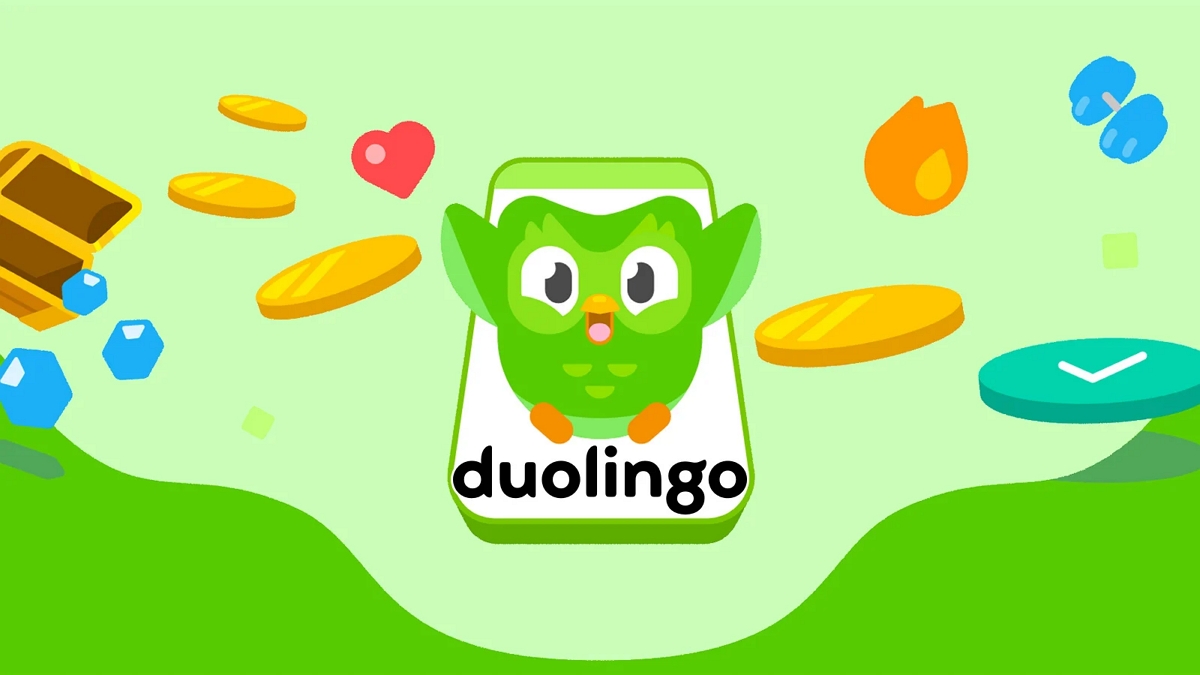 Case Study:
Case Study:
Duolingo’s Language Learning Gamification- Company: Duolingo, United States (Founded in 2011)
- What Was Done: Duolingo’s success stems from understanding that its audience wants to learn languages in a way that is fun and accessible. They gamified the learning experience with bite-sized lessons, in-app rewards, and a friendly, approachable tone in all communications.
- Results/Impact: By tailoring the product to audience preferences for entertaining and flexible learning, Duolingo has become the most downloaded education app globally, with over 500 million downloads and 40 million active users monthly. Their approach illustrates the effectiveness of audience-centric product development and communication.
- Strategic Targeting: A deep understanding of your audience informs you where and how to reach them, allowing for more strategic targeting and efficient use of marketing resources.
- Building Relationships: By understanding and addressing the needs and values of your audience, you can build stronger, more meaningful relationships with your customers, fostering loyalty and advocacy.
 Case Study: Glossier’s Community-Driven Brand
Case Study: Glossier’s Community-Driven Brand- Company: Glossier, United States (Founded in 2014)
- What Was Done: Glossier built its brand by cultivating a community of beauty enthusiasts. They engaged with their audience on social media and used their feedback to guide product development. Their marketing strategy involves using real customer photos instead of models, resonating with their target audience's desire for authenticity.
- Results/Impact: This strategy has helped Glossier to not just understand but also bond with its audience, turning customers into brand advocates. Their community-focused approach has played a crucial role in their rapid growth, with the company reaching a valuation of over $1 billion.
In essence, the rule of "Know Your Audience" emphasizes the need for a customer-centric approach in all marketing activities. It's about putting the customer at the heart of your marketing strategy, ensuring that every decision made serves to provide value to your target audience, thereby driving business success.

Advertising
Advertising is a crucial component of the marketing mix, serving as a strategic effort to influence the purchasing behavior of consumers through various forms of paid media. The aim is to communicate a product's, service's, or brand's value proposition to potential customers, thereby driving demand, enhancing brand recognition, and ultimately contributing to sales growth.
Here’s an in-depth look at the multifaceted world of advertising:
Objectives of Advertising
- Brand Awareness: Increase visibility and awareness of a brand among the target audience.
- Lead Generation: Encourage potential customers to express interest or engage with the brand.
- Market Penetration: Introduce new products or services to the market or increase market share.
- Customer Retention: Keep existing customers engaged and loyal to the brand.
 Case Study: Spotify’s Wrapped Campaign
Case Study: Spotify’s Wrapped Campaign
- Company: Spotify
- What Was Done: Spotify’s Wrapped campaign is an annual advertising initiative that provides users with personalized insights into their listening habits over the past year. This campaign combines data analytics with creative advertising, offering shareable content that users eagerly anticipate and engage with.
- Results/Impact: The Wrapped campaign consistently garners widespread attention on social media, driving user engagement and brand loyalty. It's an innovative approach to advertising that leverages user data for personalized marketing, significantly increasing Spotify’s reach and user interaction during the campaign period.
Key Advertising Channels
- Traditional Media: Includes television, radio, newspapers, magazines, and billboards. These channels have a broad reach but are often expensive and challenging to measure in terms of effectiveness.
- Digital Media: Encompasses online platforms such as social media, search engines (Google Ads), email marketing, and display ads on websites, as well as digital signs and billboards. Digital advertising allows for precise targeting and real-time performance analysis.
- Social Media: Platforms like Facebook, LinkedIn, Instagram, Twitter, TikTok, YouTube and Pinterest offer targeted advertising options based on user demographics, interests, and behaviors.
- Content Marketing: A strategic approach focused on creating and distributing valuable, relevant, and consistent content to attract and retain a clearly defined audience.
- Influencer Marketing: Collaborating with individuals who have a significant following on social media to promote products or services.
Strategies for Effective Advertising
- Target Audience Identification: Understanding who the potential customers are and tailoring the advertising message to meet their needs and interests.
 Case Study:
Case Study:
Bee's Wrap Sustainable Advertising Campaign- Company: Bee's Wrap
- What Was Done: Bee's Wrap, a small company specializing in sustainable food storage solutions, launched a targeted online advertising campaign focusing on the environmental benefits of using beeswax food wraps over single-use plastics. The campaign utilized social media platforms and eco-conscious blogs to reach their target audience.
- Results/Impact: The campaign significantly raised awareness about Bee's Wrap as an eco-friendly alternative to plastic cling films, resulting in a 50% increase in online sales and expanding their retail distribution in eco-friendly stores. The success of the campaign demonstrates the power of well-targeted advertising for small businesses looking to make a big impact.
- Creative Development: Crafting compelling and memorable ad creatives that resonate with the target audience.
 Case Study: Dove’s Real Beauty Sketches
Case Study: Dove’s Real Beauty Sketches- Company: Dove, Unilever
- What Was Done: Dove’s Real Beauty Sketches campaign featured a forensic artist who drew women first based on their own descriptions and then based on descriptions given by strangers. The differences between the sketches highlighted the gap between self-perception and what others see, aligning with Dove’s mission to boost self-confidence.
- Results/Impact: his advertising campaign went viral, receiving widespread media coverage and public discussion. It not only elevated Dove’s brand image as a champion of real beauty and self-esteem but also significantly increased product sales, demonstrating the power of emotional and value-driven advertising.
- Channel Selection: Choosing the most appropriate channels to reach the target audience efficiently.
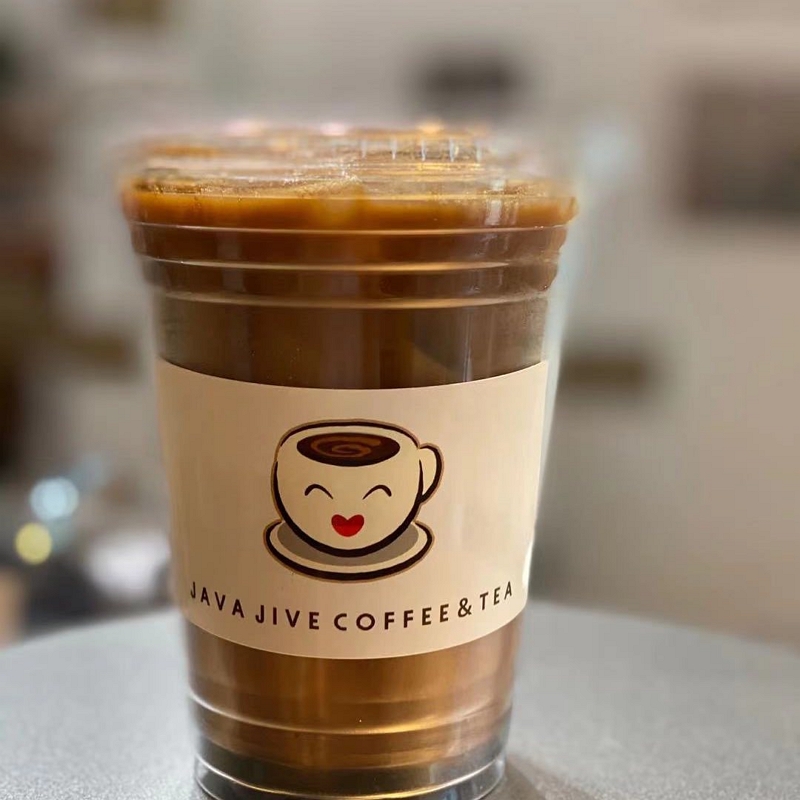 Case Study: Local Coffee Shop Brews Success with Hyper-Local Ads
Case Study: Local Coffee Shop Brews Success with Hyper-Local Ads- Company: Java Jive, a local coffee shop in Cary, North Carolina
- What Was Done: Java Jive implemented a hyper-local advertising strategy using geotargeted ads on social media and local online forums, promoting daily specials and community events hosted at the coffee shop to nearby residents and businesses.
- Results/Impact: This approach led to a noticeable increase in foot traffic, particularly during events, and a 30% uptick in daily sales over six months. Java Jive's success highlights the effectiveness of localized advertising strategies for small businesses aiming to increase their presence in the community.
- Performance Measurement: Utilizing metrics and analytics to measure the effectiveness of advertising campaigns and adjust strategies accordingly.
Challenges in Advertising
- Ad Fatigue: Overexposure to ads can lead to disinterest or annoyance among consumers.
- Changing Consumer Behaviors: The rapid evolution of consumer preferences and digital technologies requires advertisers to continuously adapt their strategies.
- Privacy Concerns: Increasing concerns over data privacy have led to stricter regulations, impacting targeting capabilities.
Future of Advertising
- The future of advertising lies in the integration of emerging technologies such as artificial intelligence, augmented reality, and programmatic advertising to create more personalized, immersive, and efficient advertising experiences.
In conclusion, advertising remains a dynamic and essential element of marketing strategy, necessitating creativity, strategic planning, and continuous adaptation to changing market conditions and consumer behaviors. By leveraging a mix of traditional and digital channels, advertisers can effectively communicate their messages, engage with their audiences, and achieve their marketing objectives.

Marketing and Advertising
Marketing and advertising are two intertwined disciplines within the broader field of business promotion, each playing a crucial role in communicating with target audiences and driving consumer behavior. While closely related, they focus on various aspects of the promotion process.
Here’s a detailed look at both:
Marketing
This is a comprehensive process that encompasses the entire journey of identifying consumer needs, developing products or services to meet those needs, and ultimately delivering and promoting them to consumers. Marketing involves research, analysis, product development, pricing strategy, distribution, and promotion. It’s about understanding and satisfying customer needs in a way that benefits both the customer and the business.
- Strategic Focus: Marketing is strategic in nature, focusing on building long-term relationships with customers through brand building and customer engagement strategies.
- Broad Scope: It covers a wide range of activities aimed at driving sales and enhancing brand perception, including market research, segmentation, targeting, positioning, product development, and overall business strategy.
- Objective: The primary objective of marketing is to create value and satisfy customer needs, which in turn drives sales and ensures business growth.
Advertising
Advertising is a subset of marketing, a specific technique used to promote products, services, or ideas through various forms of paid media. Advertising aims to inform, persuade, and remind potential and existing customers about the brand or offerings.
- Tactical Focus: Advertising is more tactical, utilizing specific campaigns and media to communicate directly with target audiences.
- Paid Promotion: It involves paying for space or airtime on various platforms, such as TV, radio, print media, digital platforms, and outdoor advertising, to deliver a controlled message to a wide audience.
- Objective: The goal of advertising is to influence purchasing behavior by making compelling arguments about the benefits and features of a product or service.
Interplay Between Marketing and Advertising
- Advertising as a Tool: Advertising is one of the tools used in marketing to communicate the value proposition of a product or service to the target audience. It’s a key component in the promotional mix, alongside public relations, sales promotion, and personal selling.
- Strategic Alignment: Effective advertising campaigns are based on the strategic insights and objectives outlined in the broader marketing plan. This ensures that advertising efforts are aligned with the overall goals of the marketing strategy.
- Mutual Reinforcement: While advertising can generate immediate visibility and interest, marketing strategies work to build and nurture relationships with customers over time. Together, they drive both short-term sales and long-term brand loyalty.
 Case Study: Frank Body’s Cheeky Coffee Scrubs
Case Study: Frank Body’s Cheeky Coffee Scrubs- Company: Frank Body, Australia (Founded in 2013)
- What Was Done: Frank Body used a clever combination of marketing and advertising to promote his coffee-based skincare products. Utilizing sassy, body-positive messaging and user-generated content across social media, they created a distinct brand voice that stood out in the crowded beauty market.
- Results/Impact: This approach catapulted Frank Body from a small startup to a global beauty brand, with their coffee scrub becoming a cult favorite. Their success illustrates how creative marketing and advertising can elevate a simple product into a lifestyle choice for consumers.
In summary, marketing provides the framework and strategic direction for reaching potential customers and fulfilling their needs, while advertising is a specific, paid tactic used to convey persuasive messages within that framework. Successful businesses integrate advertising into their broader marketing strategies to maximize impact and achieve their promotional goals.
Marketing Strategy and Consulting
Interested in getting help with your marketing efforts and marketing strategy?
Contact us: info@zooz.co.il ,+972-9-958-5085
Marketing Articles
- Marketing Overview
- Marketing Goals
- Marketing Metrics
- Marketing Types
- Marketing Channels
- Demographic Marketing
- Marketing Business Models
- Industry-Specific Marketing
- Professional Services Marketing
- Marketing Strategy
- Market Research
- Marketing Communications (MarCom)
- Marketing Execution
- Makreting Careers
- Marketing Education
- Marketing Glossary (200 terms)
- Marketing Versus Other Disciplines
- Marketing Agencies and Outsourcing





